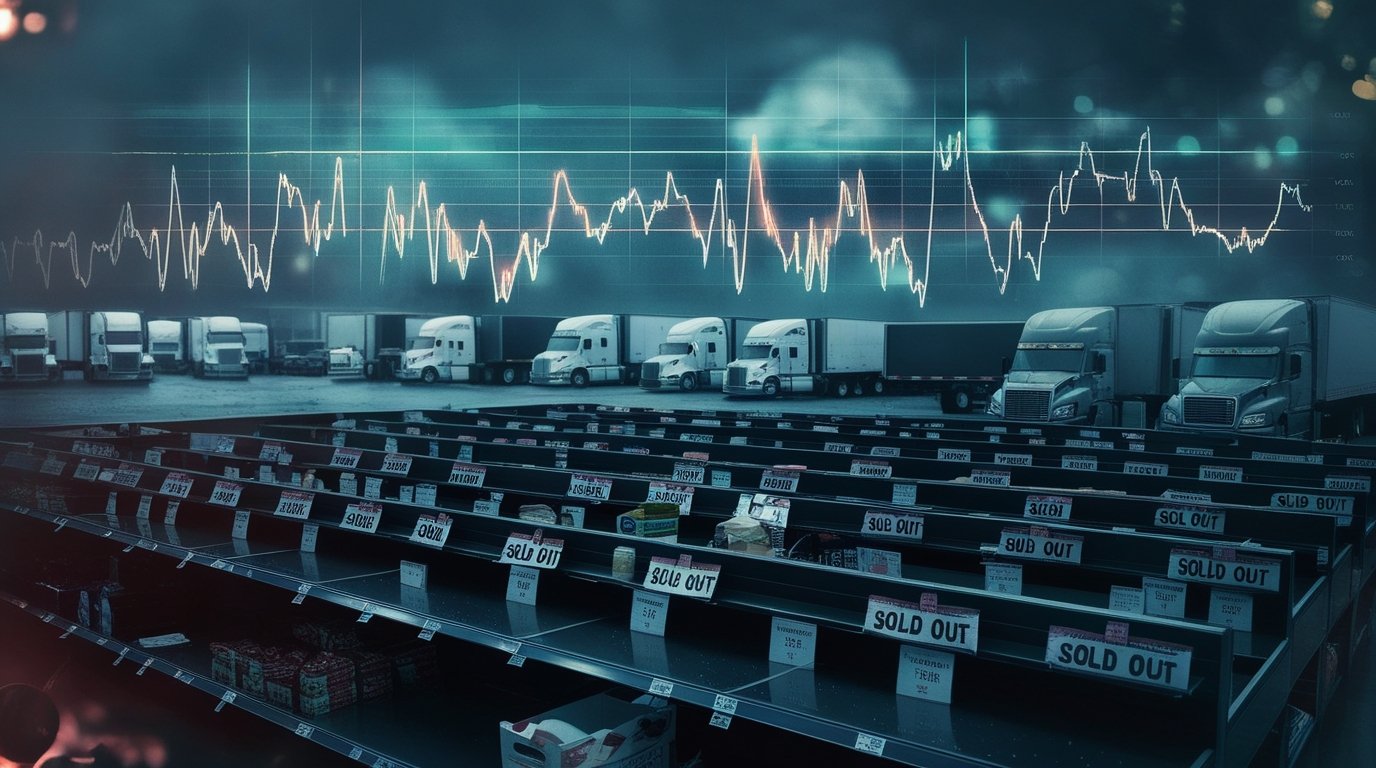Economic Shock Crisis: How Trade Wars Sparked a Devastating Summer Recession
Economic Shock Crisis: Empty Shelves and Mass Layoffs Reveal Deepening Summer Recession
A catastrophic economic shock is ripping through global markets, with barren store shelves and staggering trucking industry layoffs heralding what experts now confirm is a full-blown summer recession. This financial shockwave, triggered by Apollo Group’s aggressive tariff policies, demonstrates how rapidly protectionist measures can cripple an economy. While septic shock attacks the body and electric shock disrupts the nervous system, this economic shock is systematically dismantling supply chains with alarming speed and severity.
The current crisis represents the most significant economic disruption since the pandemic, with key differences that make this shock particularly dangerous. Unlike previous recessions that built gradually, this economic shock hit with startling suddenness – what economists are calling a “flash recession.” The speed of deterioration has left policymakers scrambling and businesses reeling, creating a perfect storm of financial instability that could take years to fully resolve.
The Tariff Timeline That Ignited Economic Shock
| Date | Trigger Event | Shock Impact | Industry Most Affected |
|---|---|---|---|
| March 15 | 25% steel tariffs enacted | Truck manufacturing plummets 12% overnight | Heavy equipment, automotive |
| April 3 | EU agricultural retaliation begins | Meat/dairy transport costs explode by 40% | Food distribution, logistics |
| May 1 | Asian electronics blockade | Major retailers face 30% inventory deficits | Consumer electronics, appliances |
| June 10 | Cross-border trucking halted | 15,000 freight professionals are jobless | Transportation, warehousing |
| July 1 | Consumer goods crisis peaks | Q2 GDP contracts by 1.8% | Retail, manufacturing |
The timeline reveals how quickly protectionist policies can cascade through interconnected economies. What began as targeted tariffs on specific commodities rapidly metastasized into a full-blown economic shock affecting nearly every sector. The transportation industry, serving as the circulatory system of commerce, has been particularly hard hit, with trucking companies reporting the worst financial conditions since the 2008 financial crisis shock.
Three Shock Systems Paralyzing the Economy
1. Supply Chain Shock
The supply chain shock represents the most visible symptom of the crisis:
38% of retailers report critical shortages of essential goods
Automotive plants have been forced to idle production lines
Electronics manufacturers face unprecedented component delays
Parallel: More disruptive than an electric shock to infrastructure systems
2. Labor Market Shock
The employment landscape has suffered devastating blows:
85,000+ transportation jobs eliminated in 60 days
Warehouse operations are facing 25% staffing shortages
Manufacturing sector shedding jobs at the fastest rate since 2009
Parallel: Workforce collapse mirrors organ failure in shock
3. Consumer Confidence Shock
The psychological impact may prove most damaging long-term:
Durable goods spending crashes 25% year-over-year
Savings rates hit 15-year highs as fear spreads
Credit card usage declines sharply despite inflation easing
Small business optimism indices reach record lows
Medical vs. Economic Shock – A Frightening Comparison
The parallels between medical and economic shock states reveal why this crisis demands emergency intervention:
| Parameter | Medical Shock | Economic Shock | Key Difference |
|---|---|---|---|
| Onset Speed | Minutes | 90-120 days | Economic shock allows a brief warning |
| Vital Signs | BP/HR collapse | GDP/employment freefall | Economic indicators are more complex |
| Treatment | Emergency intervention | $4T stimulus proposed | Political delays worsen economic shock |
| Mortality Risk | 40% in severe cases | 5-year recovery projected | Economic shock has a longer tail risk |
The comparison highlights why traditional economic remedies may prove insufficient. Just as septic shock requires aggressive antibiotic therapy, this economic shock demands unprecedented policy responses to prevent systemic collapse.
Sector-Specific Shock Damage Reports
🛒 Retail Apocalypse
The retail sector faces existential threats:
52-day backlog for major appliances
Just-in-time inventory systems completely failed
Store closures accelerating at 2008 rates
Online retailers are struggling with fulfillment
🚛 Trucking Industry Collapse
Transportation networks are crumbling:
Spot rates down 61% since January
1 in 5 truckers are now unemployed
Diesel prices remain elevated despite demand drop
Insurance costs are skyrocketing for remaining fleets
🏭 Manufacturing Disaster
Industrial production in freefall:
PMI crashes to 42.3 (deep contraction)
Steel-dependent sectors hardest hit
Factory utilization rates at 30-year lows
Capital investment plans are being shelved
Emergency Shock Treatments Underway
Policymakers are scrambling to contain the damage:
Tariff Reversals (Under urgent review)
Potential 50% reduction on steel imports
Agricultural tariff ceasefire negotiations
Freight Industry Bailout ($7B package drafted)
Direct subsidies for trucking companies
Loan guarantees for equipment purchases
Retraining programs for displaced workers
Critical Goods Airbridge (Military logistics activated)
Strategic airlift for medical supplies
Priority shipping for food staples
Emergency fuel distribution networks
Warning: Like septic shock, delayed treatment could prove fatal to the economy. The window for effective intervention is closing rapidly as the crisis enters its fourth month.
Historical Shock Comparisons
The current crisis shares characteristics with past economic disasters:
1929 Market Shock (Great Depression)
Similar rapid onset
Banking system vulnerabilities
Key difference: Stronger safeguards today
1973 Oil Shock (Stagflation crisis)
Supply-side origins
Transportation sector collapse
Key difference: More diversified energy now
2020 Pandemic Shock (Global paralysis)
Supply chain disruptions
Labor market turmoil
Key difference: Policy tools are already depleted
Business Survival Tactics
Companies must take immediate action:
Diversify suppliers immediately
Develop alternative sourcing
Nearshore critical components
Regionalize distribution networks
Reduce transport dependencies
Build local inventory hubs
Stockpile 120-day inventories
Prioritize essential inputs
Secure warehouse capacity
Consumer Emergency Preparedness
Individuals should consider:
⚠️ Secure a 30-day food/medicine supply
⚠️ Postpone all major purchases
⚠️ Convert 20% savings to cash
⚠️ Review employment alternatives
⚠️ Monitor local supply situations



